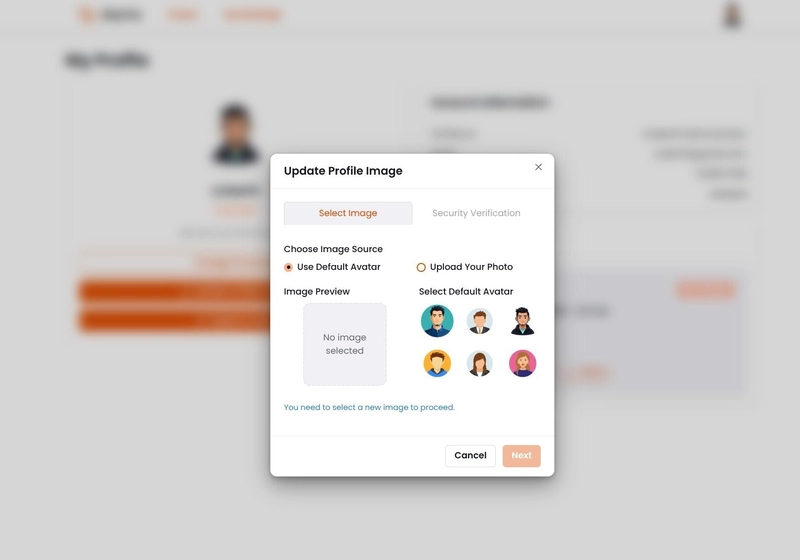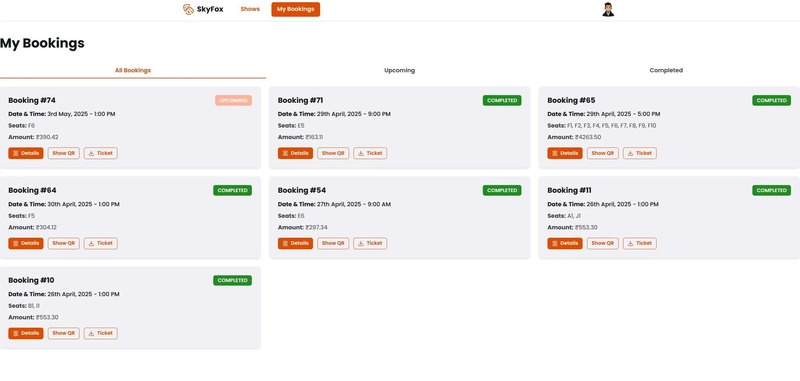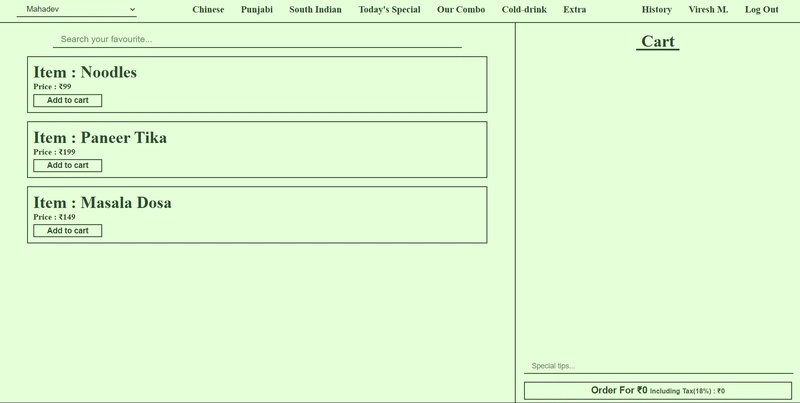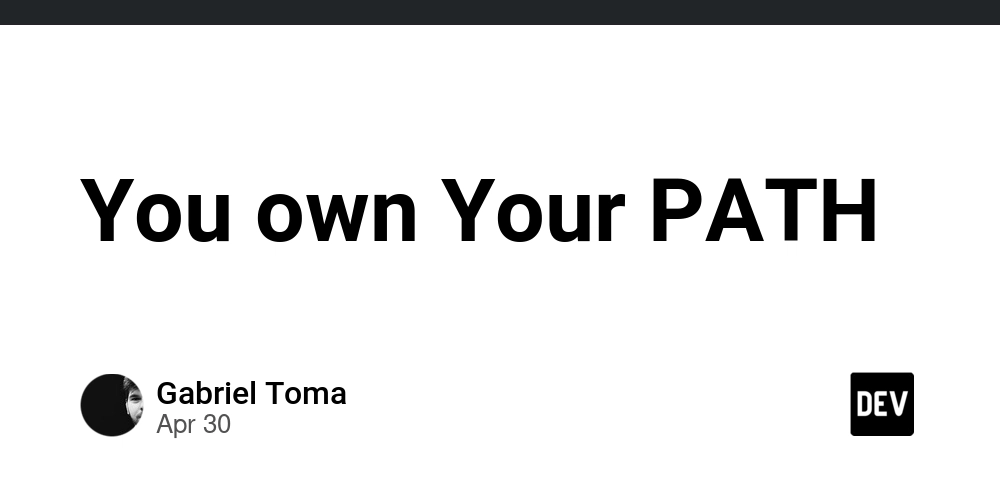Engineering the Box Office: My Full Stack Movie Booking Platform Unveiled
Introduction Have you ever paused to wonder what really happens when you book a movie ticket online? What unfolds behind the scenes when you check show details or reserve your favorite seat? I’ve always been fascinated by the complexity beneath that simple click-and building SkyFox Cinema gave me the perfect opportunity to explore it firsthand. SkyFox Cinema is a modern, full stack movie booking platform designed to help regional theaters embrace digital transformation. My goal was to empower local cinema owners with a robust, scalable system that leverages the latest in software engineering practices-while also challenging myself to solve real-world business and technical problems (this was a fictitious scenario I created for myself). Check it our here signing up as a customer Technology Stack: NextJS (Frontend) Chakra UI and Material UI (UI Libraries) Go (Backend, Gin Framework) Supabase (Managed Postgres) Docker (Containerization) AWS (Deployment & S3 Integration) In this blog, I’ll take you behind the curtain of SkyFox Cinema: from designing resilient backend microservices and implementing real-time seat locking, to building a modular, CSS-free frontend and deploying the platform on AWS. You’ll get an insider’s look at the architectural decisions, challenges, and solutions that shaped this project. This isn’t a step-by-step tutorial, but a candid reflection on the development journey-highlighting the business impact, technical rigor, and personal growth that came with building a production-grade proof of concept. As an intern, I was determined to tackle the kinds of challenges that established vendors often charge a premium for: concurrency, security, seamless user experience, and more. It’s not a guide, but an insight into the development journey of this project I’ve built. I had a lot of fun making it and spent hours on it daily, so hopefully you can see my passion for tech as well! While still being an intern, I’ve tackled multiple real-life business problems for which third parties charge unreasonably-such as concurrency handling, great user journeys, server architectures, and many more! Whether you’re a developer, a tech leader, or someone curious about what powers your favorite ticketing app, I hope this post offers valuable insights and maybe even sparks your own curiosity. Read on for a deep dive into the architecture, key technical implementations, and the lessons learned along the way. Motivation My internship at IDFC FIRST Bank was a turning point in my journey as a developer. Through the Neev Developer Bootcamp, I didn’t just pick up the technical fundamentals-pair programming, Test Driven Development, and modern software practices-but also learned the real value of teamwork and shared goals. Working with my team, “ULTRON,” was a highlight; together, we navigated challenges, celebrated every small win, and discovered how much more is possible when you collaborate. That experience lit a spark in me to push my boundaries even further. After the bootcamp, my curiosity was insatiable. I wanted to take everything I’d learned and see what I could build on my own. I saw clear opportunities for improvement in our original project: the backend could be more RESTful, the frontend could leverage newer technologies, and there was a whole world of DevOps and cloud deployment waiting to be explored. My hands-on experience with AWS gave me the confidence to step up-not just as a developer, but as a lead architect and DevOps engineer for a full-stack solution. I set out to become a Full Stack++ Developer-someone who could not only work across the stack, but also connect business needs with technical solutions. SkyFox Cinema became my sandbox: I rebuilt every layer, from backend concurrency and microservices to a modern frontend, cloud deployment, and robust security. What made this journey truly ambitious was the sheer modularity and scope. Every feature-whether booking logic, profile management, or payment integration-felt like a mini project in itself. In real-world companies, entire teams would tackle these challenges, but I was determined to take on every role, learning through both successes and setbacks (and, of course, plenty of coffee) This project became more than just a technical exercise-it was a personal journey of growth, resilience, and a genuine passion for building solutions that matter. I’m driven by the desire to keep learning, to tackle challenges head-on, and to create technology that empowers others. That’s what keeps me motivated-and that’s the story behind SkyFox Cinema. Architectural Overview and Key Technical Implementations The architecture of SkyFox Cinema is designed for modularity, security, and real-world reliability-even as a proof of concept. While this isn’t a full-blown enterprise deployment yet, it’s packed with advanced engineering patterns and cloud-native practices that make it robust and scalable. Syst

Introduction
Have you ever paused to wonder what really happens when you book a movie ticket online? What unfolds behind the scenes when you check show details or reserve your favorite seat? I’ve always been fascinated by the complexity beneath that simple click-and building SkyFox Cinema gave me the perfect opportunity to explore it firsthand.
SkyFox Cinema is a modern, full stack movie booking platform designed to help regional theaters embrace digital transformation. My goal was to empower local cinema owners with a robust, scalable system that leverages the latest in software engineering practices-while also challenging myself to solve real-world business and technical problems (this was a fictitious scenario I created for myself).
Check it our here signing up as a customer
Technology Stack:
- NextJS (Frontend)
- Chakra UI and Material UI (UI Libraries)
- Go (Backend, Gin Framework)
- Supabase (Managed Postgres)
- Docker (Containerization)
- AWS (Deployment & S3 Integration)
In this blog, I’ll take you behind the curtain of SkyFox Cinema: from designing resilient backend microservices and implementing real-time seat locking, to building a modular, CSS-free frontend and deploying the platform on AWS. You’ll get an insider’s look at the architectural decisions, challenges, and solutions that shaped this project.
This isn’t a step-by-step tutorial, but a candid reflection on the development journey-highlighting the business impact, technical rigor, and personal growth that came with building a production-grade proof of concept. As an intern, I was determined to tackle the kinds of challenges that established vendors often charge a premium for: concurrency, security, seamless user experience, and more.
It’s not a guide, but an insight into the development journey of this project I’ve built. I had a lot of fun making it and spent hours on it daily, so hopefully you can see my passion for tech as well!
While still being an intern, I’ve tackled multiple real-life business problems for which third parties charge unreasonably-such as concurrency handling, great user journeys, server architectures, and many more!
Whether you’re a developer, a tech leader, or someone curious about what powers your favorite ticketing app, I hope this post offers valuable insights and maybe even sparks your own curiosity. Read on for a deep dive into the architecture, key technical implementations, and the lessons learned along the way.
Motivation
My internship at IDFC FIRST Bank was a turning point in my journey as a developer. Through the Neev Developer Bootcamp, I didn’t just pick up the technical fundamentals-pair programming, Test Driven Development, and modern software practices-but also learned the real value of teamwork and shared goals. Working with my team, “ULTRON,” was a highlight; together, we navigated challenges, celebrated every small win, and discovered how much more is possible when you collaborate. That experience lit a spark in me to push my boundaries even further.
After the bootcamp, my curiosity was insatiable. I wanted to take everything I’d learned and see what I could build on my own. I saw clear opportunities for improvement in our original project: the backend could be more RESTful, the frontend could leverage newer technologies, and there was a whole world of DevOps and cloud deployment waiting to be explored.
My hands-on experience with AWS gave me the confidence to step up-not just as a developer, but as a lead architect and DevOps engineer for a full-stack solution.
I set out to become a Full Stack++ Developer-someone who could not only work across the stack, but also connect business needs with technical solutions. SkyFox Cinema became my sandbox: I rebuilt every layer, from backend concurrency and microservices to a modern frontend, cloud deployment, and robust security.
What made this journey truly ambitious was the sheer modularity and scope. Every feature-whether booking logic, profile management, or payment integration-felt like a mini project in itself. In real-world companies, entire teams would tackle these challenges, but I was determined to take on every role, learning through both successes and setbacks (and, of course, plenty of coffee)
This project became more than just a technical exercise-it was a personal journey of growth, resilience, and a genuine passion for building solutions that matter.
I’m driven by the desire to keep learning, to tackle challenges head-on, and to create technology that empowers others. That’s what keeps me motivated-and that’s the story behind SkyFox Cinema.
Architectural Overview and Key Technical Implementations
The architecture of SkyFox Cinema is designed for modularity, security, and real-world reliability-even as a proof of concept. While this isn’t a full-blown enterprise deployment yet, it’s packed with advanced engineering patterns and cloud-native practices that make it robust and scalable.
System Architecture at a Glance
SkyFox Cinema is composed of three primary layers:
- Frontend: Next.js and React, hosted on Vercel for seamless CI/CD, SSL, and lightning-fast delivery.
- Backend & API Gateway: Go (Gin) backend, containerized and deployed on AWS Elastic Beanstalk, protected by an NGINX reverse proxy acting as an API gateway.
- Microservices: Dedicated movie and payment services, each containerized and hosted on Render, communicating securely with the core backend.
- Database & Storage: Supabase (Postgres) for relational data, AWS S3 for secure, scalable profile image storage.
Frontend: Modern, Modular, and Delightfully Secure
The Next.js 13+ frontend is a showcase of modern web engineering. With Chakra UI and Material UI, the interface is fully responsive and styled-without a single line of custom CSS. Vercel handles deployments and SSL automatically, letting me focus on features, not infrastructure.
Highlights:
- API Proxy Layer: All API calls go through Next.js API routes, keeping backend endpoints and secrets hidden from the client.
- Role-Based UI: The interface dynamically adapts to user roles (customer, staff, admin), ensuring everyone sees only what’s relevant.
- Context-Driven State: React Context and custom hooks power real-time data refresh, centralized dialog management, and smooth multi-step flows.
- Security on the Client: Sensitive data stays server-side; authentication and authorization use secure cookies and server logic.
Complex UI Components & User Experience
SkyFox Cinema’s UI is built for clarity and engagement. Multi-step signup and booking dialogs, profile update flows, and show cards are all modular and reusable. The booking journey guides users through seat selection, payment, and confirmation-with real-time seat availability and feedback at every step.
Contexts, Reducers, and Custom Hooks
State management is handled with React’s Context API, useReducer, and custom hooks. The centralized dialog context manages all modals, eliminating prop drilling and making it easy to add new dialogs. Complex forms like profile management use useReducer for secure, multi-step updates.
Real-Time Data Refresh & Cache Invalidation
A dedicated Shows Context ensures that after any booking or show scheduling, all relevant seat maps and show lists refresh instantly-no manual reloads needed. This is achieved via cache invalidation and context-driven updates, so users always see the latest data.
Show Scheduling & Management
Admins can schedule new shows with an intuitive dialog-selecting movies, time slots, and pricing. The backend enforces business rules (no past-dated shows or slot conflicts), while the frontend delivers instant feedback and real-time updates.
Theme, Fonts, and UX Details
The theme is fully customized with Chakra UI, featuring brand colors, custom fonts, and responsive breakpoints. Payment forms auto-detect Visa/Mastercard icons via regex and display the right card logo, while skeleton loaders keep the UI polished and user-friendly.
Backend & Microservices: Resilient and Scalable
The Go (Gin) backend follows clean architecture-controllers, services, and repositories are strictly separated for maintainability. It’s containerized and deployed on AWS Elastic Beanstalk, running behind an NGINX reverse proxy that handles API key validation and rate limiting.
Microservices
- Movie Service: Handles movie metadata, decoupled for scalability.
- Payment Service: Validates payments with strict input checks and is fully covered by TDD, ensuring reliability for critical business logic.
Database & Storage: Integrity and Security
- Supabase (Postgres): All transactional data-users, bookings, shows, seats, payments-lives in a normalized schema.
-
AWS S3 for Profile Images: Images are uploaded through a secure, multi-step process:
- The client computes a SHA-256 hash and sends it with the image.
- The backend verifies, rescales, and uploads to S3 using IAM roles (no access keys needed).
- Only a 24-hour presigned URL is ever given to the client, further abstracted through Next.js proxy routes.
Concurrency, Real-Time Booking, and Data Integrity
- Seat Locking with GoRoutines:When a user starts booking, the backend launches a goroutine to lock seats for 5 minutes. If the booking isn’t completed, the goroutine releases the seats-no double bookings, no race conditions, even under heavy load.
Two-Phase Booking: Customers reserve seats (pending booking) and then complete payment. Admins can bypass payment for walk-in bookings.
PDF and QR Generation: On booking confirmation, the backend generates a PDF ticket and QR code on demand. These are streamed to the frontend via secure proxy routes-never exposing raw files or URLs.
Security Features: Defense in Depth
- JWT Tokens: Authentication with user roles embedded and validated on every request.
- RBAC (Role-Based Access Control): Strict role checks on both backend and frontend.
- Input Validation: Every API endpoint validates input at multiple layers.
- SQL Injection Prevention: All queries use parameterized statements.
- SHA-256 Image Validation: Ensures profile image integrity before upload.
- API Proxy and Presigned URLs: Sensitive operations are handled server-side; only temporary, signed URLs are shared.
- Separation of Concerns: The frontend talks only to its own API layer, which then communicates with the backend-a clean, auditable boundary.
Migrations, Data Seeding, and Error Handling
- Automated Migrations: Versioned migration files keep schema changes consistent.
- Data Seeding: The backend seeds initial users, movies, and seat maps for quick onboarding.
- Error Handling: All errors are standardized, logged, and tagged with unique request IDs for easy troubleshooting.
APIs & Documentation
- RESTful APIs: The backend exposes a comprehensive set of REST endpoints, all documented with clear request/response schemas.
- Live Documentation: Explore the full API and data contracts in the SkyFox Backend API Docs.
- Source Code:
Infrastructure & Deployment
- Dockerized Everything: Backend and microservices are containerized for fast local development and cloud portability.
- AWS Elastic Beanstalk: The backend runs as a single container instance for the POC, with secure environment variables and IAM roles.
- Vercel: Frontend is deployed on Vercel for instant, zero-config CI/CD and global edge delivery.
- Render: Microservices are deployed independently for isolated scaling and upgrades.
Bringing It All Together
A typical booking journey flows through the frontend’s API proxy, to the NGINX-secured backend, through microservices for movie and payment data, and finally to the database and storage layers. Every component is modular, testable, and built with security and scalability in mind-laying the foundation for future enterprise-scale enhancements.
This architecture isn’t just a technical showcase-it’s a business-minded, growth-driven approach to solving real-world problems and building something that lasts.
Challenges and Solutions
Every ambitious project comes with its own set of “plot twists”-and SkyFox Cinema was no exception. What started as a mission to tackle the problems I missed out on during my internship project simulation quickly spiraled into a full-scale re-engineering adventure.
Turns out, when you’re in your element (and fueled by enough coffee), hours can vanish building a single feature! Here are some of the challenges that truly tested me-and the creative (sometimes stubborn) solutions I found:
-
SHA Validation and Hiding S3 Presigned URL: This one was a
“problem I invented for myself,”but it became a masterclass in security and architecture. I wanted to make sure users never saw the S3 presigned URL in their browser’s network tab-because, let’s face it, sharing direct access to your storage bucket isn’t ideal. The solution? I leveraged Next.js proxy routes, so only the frontend server ever talks to the backend for presigned URL generation and file access. This led me to adopt a clean, industry-standard Client → Frontend → Backend interaction pattern, where sensitive operations are always server-side. Bonus: it forced me to build a consistent SSR-driven architecture throughout the app. - Security Question and Password Tokens: Nobody asked for security questions or password reset tokens, but I wanted to push my understanding of secure authentication flows. I ended up implementing a dedicated token system for these interactions-so password resets and security question verifications are isolated from regular session tokens. Not only did this make the system more robust, it gave me a taste of how enterprise-grade platforms handle sensitive user flows.
-
Concurrency & Simultaneous Bookings: Handling two people trying to book the same seat at the exact same time is the classic “race condition” problem. The solution sounds simple: temporarily block the seat. But the technical reality was a wild ride-think
GoRoutines,Worker Pools,Temporary DB bindings,Pending statesand a lot of backend/frontend coordination. Making sure the frontend stayed decoupled from business logic (no seat-locking in the browser!) while keeping everything in sync took over40 hoursof deep work and a few existential crises. But now, double-bookings are a thing of the past. - Frontend: Dialogs, Modals & UI Library Wrangling: You’d think building dialogs and modals would be easy, right? Not when you’re integrating two different UI libraries and want everything to look and feel seamless. Making Chakra UI and Material UI play nicely together, ensuring full responsiveness, and keeping the UX smooth took more trial and error than I care to admit. Even the smallest UI component can turn into a mini-project!
-
DB Architecture: Being the
Backend Engineer,Frontend Engineer, andDatabase Administratorall at once is a workout. Designing a schema with the right constraints, cascades, and future-proofing for new features was a lesson in humility. Every table and relationship had to be thought through, especially with features like seat locking and booking status that touch multiple parts of the system. -
DevOps: Because Why Not Make Life Harder?: As if full stack wasn’t enough, I dove headfirst into DevOps.
- I set up CI/CD pipelines for automated builds and deployments
- Crafted cloud architectures
- Managed load balancing
- Setup API Gateways & Reverse Proxies
- Containerized services
- Implement inter-service discovery allowing inter-service communication
- Spin up Auto Scaling Groups(ASGs) with step-up and step-down scaling based on traffic
- Wearing Every Hat (Even Project Manager): With no team to hand things off to, I became my own project manager-planning features, deployments, and roadmaps. Juggling all these roles gave me a new appreciation for how much coordination goes into real-world software projects.
What's Next
SkyFox Cinema is just getting started! Coming up:
- A Check-In feature for confirmed bookings, so users can mark their arrival at the theater.
- An Admin Dashboard with revenue stats, filters, and insights-because data is power.
- A Customer Wallet for card-less and partial payments, making transactions even smoother.
And of course, I’ll be rolling out the full production-grade architecture. Why not now? Well, running that setup in the cloud costs $18 a week (and yes, it could handle thousands of monthly active users with plenty of concurrency!). For now, the POC is more than enough to show what’s possible-and to keep my wallet happy.
Who knows what challenges (and fun) the next version will bring? Stay tuned!







































































































































































![[The AI Show Episode 145]: OpenAI Releases o3 and o4-mini, AI Is Causing “Quiet Layoffs,” Executive Order on Youth AI Education & GPT-4o’s Controversial Update](https://www.marketingaiinstitute.com/hubfs/ep%20145%20cover.png)













































































































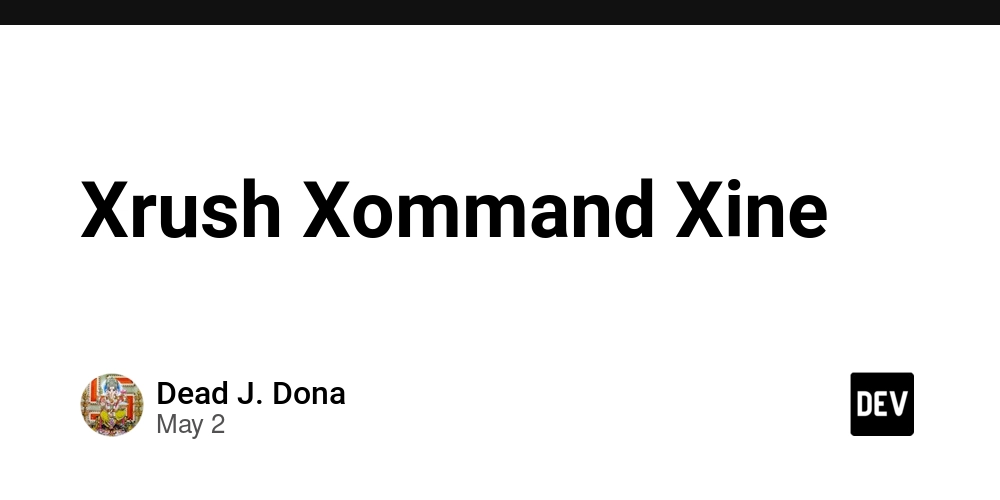



















![From Art School Drop-out to Microsoft Engineer with Shashi Lo [Podcast #170]](https://cdn.hashnode.com/res/hashnode/image/upload/v1746203291209/439bf16b-c820-4fe8-b69e-94d80533b2df.png?#)








































































































(1).jpg?#)






























_Inge_Johnsson-Alamy.jpg?width=1280&auto=webp&quality=80&disable=upscale#)













































































































![Apple Developing AI 'Vibe-Coding' Assistant for Xcode With Anthropic [Report]](https://www.iclarified.com/images/news/97200/97200/97200-640.jpg)
![Apple's New Ads Spotlight Apple Watch for Kids [Video]](https://www.iclarified.com/images/news/97197/97197/97197-640.jpg)








































































![[Weekly funding roundup April 26-May 2] VC inflow continues to remain downcast](https://images.yourstory.com/cs/2/220356402d6d11e9aa979329348d4c3e/WeeklyFundingRoundupNewLogo1-1739546168054.jpg)






























